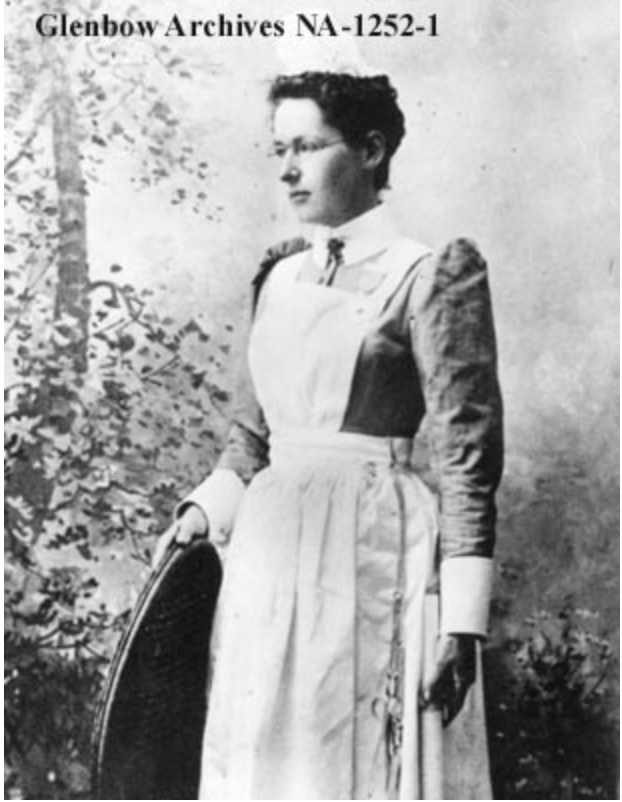Modern circumstances highlight the essential services that have always been provided by rural health care workers. A previous column focussed on a Cochrane area doctor during the first half of the 20th century. This month, Marian Moodie provides an excellent historic example of another crucial health professional — the nurse.
When she was twelve, Marion visited a convalescing friend and gave what assistance she could. The experience was so rewarding she decided she would like to be a nurse herself one day. In 1891, at the age of 24, Marion put that desire into action when her family moved from Quebec to Glenbow. On their isolated ranch, Marion helped her mother tend to the family’s injuries and ailments: Marion’s brother contracted typhoid, and her three little cousins caught scarlet fever. When her mother became fatally ill, it fell to Marion to care for her.
After her family moved to Calgary, Marion began her formal nursing education. In March of 1895, she lent a hand to the nurses at Calgary’s cottage hospital, and in April she signed up as the first probationary nurse. In this volunteer position, she worked the night shift at the nine-bed hospital (which was replaced three weeks later with Calgary’s new City Hospital). After two months of service, Marion qualified as an official student nurse. Before long, she was supervising a junior nurse and a probationer.
Nursing was exhausting and hazardous. Disease transmission was poorly understood at the time, and antibiotics and many vaccines had not yet been invented. One period of nine-weeks of gruelling night duty took its toll and Marion contracted typhoid. Although bed-ridden for seven weeks, she persevered with her educational program.
On 25 July 1898, Marion Moodie was the first nurse to graduate in what would become Alberta. Since there were few hospitals, and many patients widely scattered amongst ranches and small towns, Marion travelled to her patients’ homes. Expectations were high, conditions were primitive, and pay was insufficient (and sometimes nonexistent).

After six years on the road, Marion took employment as the sole nurse of the hospital at Frank, AB. Although the pay was more reliable, the workload remained intense. Besides caring for eight hospital patients, she also treated outpatients, administered anaesthetic during surgeries, filled in for the doctor when he was absent, cooked patient meals, and — when time permitted — milked the cow and scrubbed the floor.
Returning to Calgary a couple of years later, Marion again worked as a private nurse in patients’ homes, which sometimes required walking eight miles a day. Eventually, the arduous pace caught up with her, and she took a break from nursing for a few years. When WWI broke out, she packed supplies for the Red Cross, and then was assistant matron of the Ogden veterans’ hospital. In 1917, at the age of 50, she enlisted in the Canadian Army Medical Corps and was appointed Nursing Sister in Charge of the hospital. After the war, she moved to the Ninette Sanatorium in Manitoba, before moving to Montreal to care for an ailing relative.
Marion Moodie’s dedication to providing the best health care she could, wherever it was needed, is echoed by today’s nurses. We are indebted to all those who work tirelessly to keep us healthy.
This article was originally printed in THE BERGEN NEWS and is being reprinted with permission.